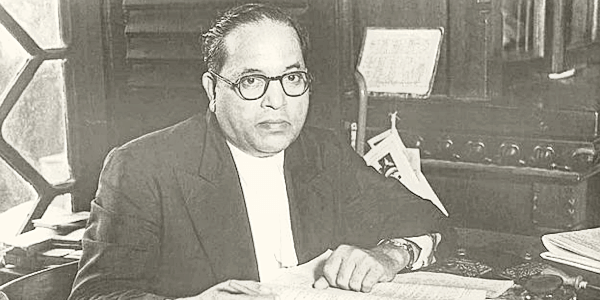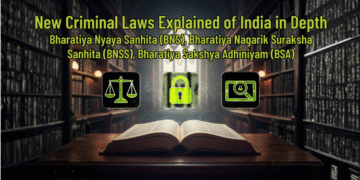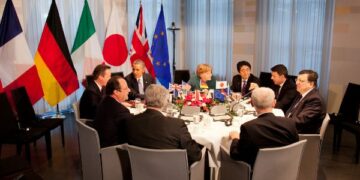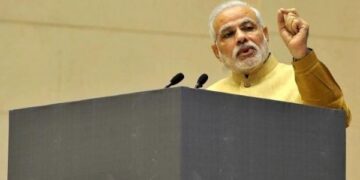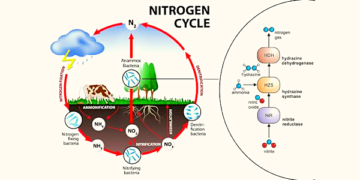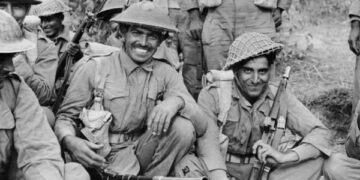This article will inform you about Dr. Babasaheb Ambedkar. Dr. BR Bhimrao Ramji Ambedkar is known as the ‘Father of the Indian Constitution.’ We’ll discuss his early life, education, political career, Dr. Babasaheb Ambedkar birthday anniversary, and other details. It is an essential part of the UPSC Civil Services Exam’s Modern Indian History Syllabus. These notes can also be used for other competitive exams such as banking POs, SSC exams, and state civil service exams.
Dr BR Ambedkar: Introduction
Dr. BR Ambedkar’s full name is Bhimrao Ramji Ambedkar. In his youth, he was called a “BABASAHEB AMBEDKAR.” His father used to call him “BHIM” when they were kids. Dr. BR Ambedkar was born on 14 April 1891 in the little hamlet of “Mhow.” He was his father’s 14th and final kid. He was a born scholar, a member of the Indian Court’s Jury, a great politician, and an economist. Dr Babasaheb Ambedkar was a driving force behind the “Dalit Buddhist movement,” which fought against societal injustice against Dalits. He also fought for the rights of women & workers. After India’s independence, he became the country’s first Minister of Law and Justice. He was also viewed as the “Father of the Indian Constitution” or the “Chief Architect of the Indian Constitution.”
Why in the news:
Dr. Babasaheb Ambedkar Birthday Anniversary:
On April 14, Dr. B.R. Ambedkar’s Birthday, also known as Ambedkar Jayanti or Bhim Jayanti (Birthday), is commemorated. He is widely viewed as our country’s leading national builder. April 14th marks the 131st anniversary of Dr. Ambedkar’s birth. ACCORDING TO PRIME MINISTER NARENDRA MODI, Dr. B. R. Ambedkar has made indelible contributions to the country’s prosperity.
You will discover important UPSC study material here to help you prepare for your exam. So, don’t forget to click the above link. We’ll also discuss Dr. Babasaheb Ambedkar’s fight against untouchability, Birthday, political career, and role as Father of the Indian Constitution.
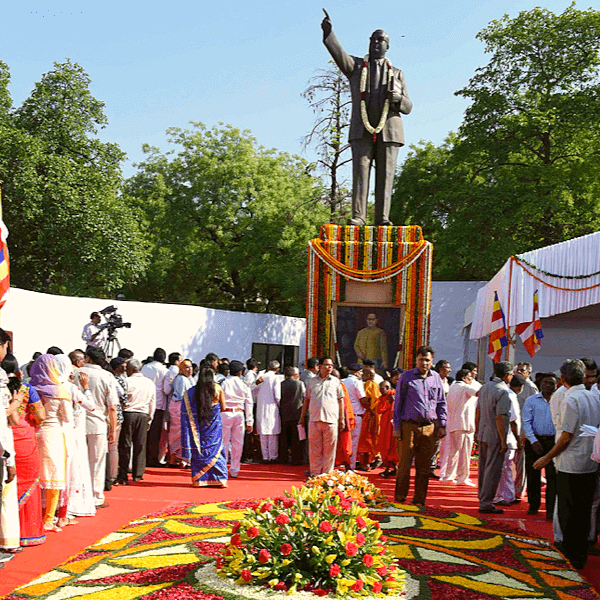
Dr BR Ambedkar: Education
- Dr. BR Ambedkar graduated from Mumbai’s Elphinstone High School in 1897 with post-secondary education. He was only 15 yrs old when he finished his post-secondary education. He was also the sole Dalit student in their school at the time.
- Dr. BR Ambedkar went on to Undergraduate studies after completing his Post-Secondary courses. Dr. BR Ambedkar completed his Matriculation test at the University of Bombay in 1907. He also became the first person from his caste to pass the matriculation examination with this degree.
- Following that, he pursued graduate studies and earned a degree in Economic Studies and Political Science in 1912. Following their graduation, he was offered a job by the Baroda State Government.
- His father died the same year they graduated, so he quit his work and returned to Mumbai. However, after a year, he moved to the United States and began post-graduate studies at Columbia University in New York. In 1915, he earned a Master of Arts degree in economics, sociology, history, philosophy, and anthropology, among other areas. He also presented his first thesis, “Ancient Indian Commerce,” in the same year and his second thesis, “National Dividend of India,” a year later.
- Then he traveled to London to pursue his doctorate. He earned his Doctor of Science in Economics from the London School of Economics, University of London, in 1923.
Political career
- Ambedkar created the Independent Labour Party in 1936, which ran for the 13 reserved and 4 general seats in the Central Legislative Assembly of Bombay in 1937, winning 11 and 3 seats, respectively.
- On May 15, 1936, Ambedkar published Annihilation of Caste. It was harshly critical of Hindu orthodox religious leaders and the caste system in general and included “a Gandhi scolding” on the subject.
- Dr Ambedkar introduced a bill in the Bombay Legislative Assembly in 1937 with the goal of abolishing the khoti system and establishing a direct interaction between the government and farmers.
- As Minister for Labour, Ambedkar served on the Viceroy’s Executive Council and the Defence Advisory Committee.
- Following the Muslim League’s Lahore resolution (1940) requesting Pakistan, Ambedkar published a 400-page tract titled Thoughts on Pakistan, in which he examined the concept of “Pakistan” in all of its facets.
- Ambedkar suggested that the Hindus should give the Muslims Pakistan. In South Asia, Ambedkar strongly criticized Islamic practices. He condemned early marriage and the maltreatment of women in Muslim society while advocating India’s partition.
Fight Against Untouchability
He progressed to another stage of his career as a national leader with a pan-India vision of modernity based on social justice and equality ideals. As the Indian independence movement gained steam, Gandhi channeled his considerable intellectual powers into writing an anthem for an inclusive India and fought ceaselessly for political and social rights for Dalits and other underprivileged groups.
He founded the’Bahishkrit Hitkarini Sabha (Outcastes Welfare Association)’ in 1923, intending to bring education and culture to the poor.
Ambedkar had resolved to start active anti-untouchability efforts by 1927. He began with public movements & marches to free up public drinking water resources.
He also started a fight for the freedom to visit Hindu shrines.
Ambedkar publicly condemned the Manusmriti (Laws of Manu) for ideologically justifying caste discrimination and “untouchability” at a conference in late 1927, and he ceremonially burned copies of the ancient text.
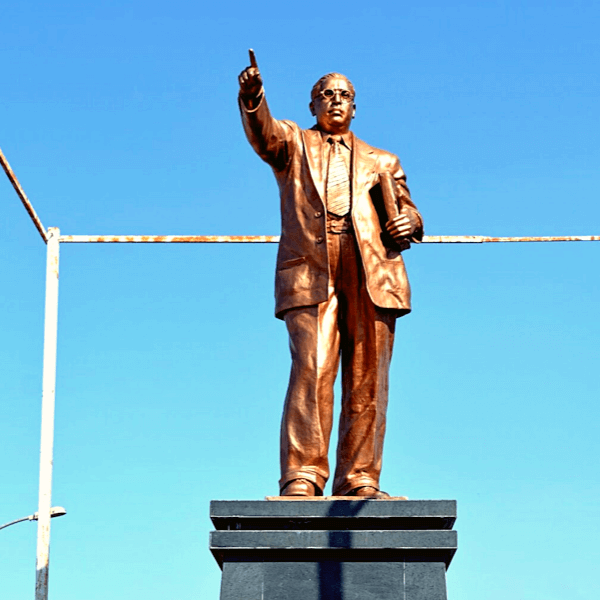
Dr BR Ambedkar: The Father of the Indian Constitution
Dr. BR Ambedkar was an authority on the Constitution at the time. He did so because he looked at the constitutions of 60 different countries. Babasaheb serves as India’s first Law Minister after the country’s independence and on August 29th. He was elected Chairman of the Constitution Drafting Committee to draught a new constitution for the country. Also, His mission was to present the prime minister with a written constitution. The committee at the time had a total of 7 members. Following DR BR Ambedkar’s appointment as chairman of the Constitution drafting committee, the timetable for the Indian Constitution is depicted below.
- Dr. Bhimrao Babasaheb Ambedkar was elected as Chairman of the Constitution Drafting Committee. On August 29, 1947, along with six other members. Muhammad Sadulla, Alladi Krishnaswamy Iyer, N.Gopalaswamy Ayyangar, Dr. K M Munsi, N Madhva Ray, and T T Krishnamachari.
- Therefore, T T Krishnamachari chose the vice president of the Constitution Assembly on July 16, 1948.
- The New Indian Constitution was passed and accepted by the Constitution Committee on this day in 1949.
- This day saw the signing and acceptance of the newly drafted Indian Constitution. Also, with 395 articles, 8 Schedules, and 22 Parts.
- Also, The newly constructed Indian Constitution, with 395 articles, 8 schedules, and 22 parts, was signed and accepted on this day in 1950.
- As a result, The Indian Constitution was put into effect all over the country on January 26, 1950.
Dr BR Ambedkar: Personal Life
Dr. Babasaheb Ambedkar married Ramabai Ambedkar, a 9-year-old girl when he was 15 years old. However, due to sickness, she died in 1935. Then, on April 15, 1948, Dr. Bhimrao Ambedkar married Dr. Sharada Kabir. Dr. B R Ambedkar died in his home city of Delhi on December 6, 1956, from a diabetes-related illness. Also, Yashwant Ambedkar was the son of Dr. B R Ambedkar. “Bhaiyasaheb Ambedkar” was another name for him.
Dr. Bhimrao Ambedkar received the Bharat Ratna Award after his death. Apart from scholarly writings and his theses, Ambedkar wrote many novels. ‘Annihilation of Caste,’ ‘Thoughts on Pakistan,’ ‘The Buddha and His Dhamma,’ ‘Who Were the Shudras?, ‘The Problem of the Rupee: Its Origin & Solution,’ and so on are some of his well-known writings. Father of the Constitution of India, “Chief Architect of the Constitution of India,” “Modern Manu,” and “Undisputed Leader of Scheduled Caste” are some of Dr. B R Ambedkar’s other well-known names.
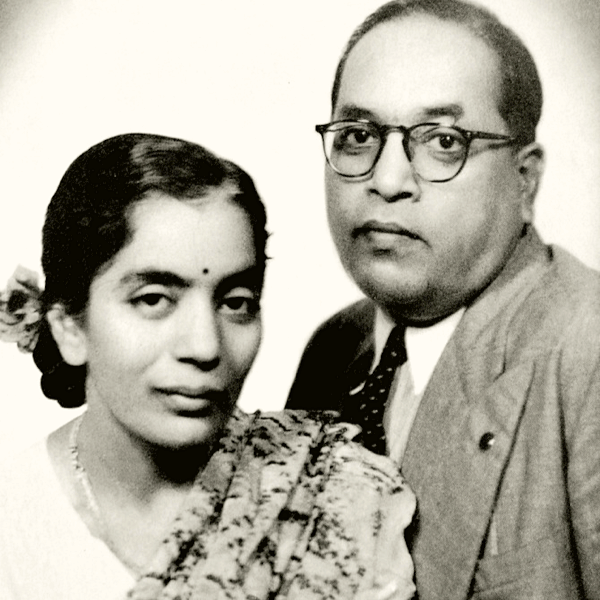
Conclusion- Dr BR Ambedkar
Even today, Ambedkarism is crucial to attaining social justice, ending untouchability, establishing equality and freedom, and establishing true democracy in Indian society. Dr. B. R. Ambedkar was a social and political reformer who had a significant impact on modern India. Also, He fought for the Dalits and other socially backward sections and women’s rights throughout his life. He was also instrumental in economic and agrarian reforms. We addressed the father of the Indian Constitution, also known as Dr. Babasaheb Ambedkar, his Birthday, political life, and other details in this post. This is an essential topic for UPSC, so read it carefully. Here is the link to UPSC’s official website.

FAQ- Dr BR Ambedkar
1. What was the purpose of Dr. Ambedkar’s visit to England?
Dr. Ambedkar moved to England after receiving his Ph.D. in economics. Also, He got accepted to both the London School of Economics and Gray’s Inn to pursue a DSc and prepare for the Bar. However, due to a lack of funds, Ambedkar returns to India and joins the state service of Baroda. Ambedkar returned to England in 1920. Dr. Ambedkar obtained his DSc and was called to the Bar in 1923. After that, Dr. Ambedkar went to India and established a legal practice in Bombay. Dr. Ambedkar became a supporter of untouchable rights.
The Hindu code bills were a set of laws enacted in India in the 1950s to codify and reform Hindu personal law. Following India’s independence in 1947, Prime Minister Jawaharlal Nehru led the Indian National Congress government in continuing the process of codification and reform initiated under the British Raj.
“Victory for Bhim,” or “Long live Bhim,” are slogans and greetings used by supporters of B. R. Ambedkar, an Indian academic, social reformer, and the principal author of the Indian Constitution. Therefore, It is a reference to Bhimrao Ambedkar’s given name.
Editor’s Note | Dr BR Ambedkar
In summary, the article discusses Dr. Bhimrao Ramji Ambedkar, also known as the “Father of the Indian Constitution.” We have included information about Babasaheb Ambedkar’s Birthday, early life, education, fight against untouchability, political career, etc. For the UPSC test, this is a significant topic. Take notes while you read. Finally, best wishes

